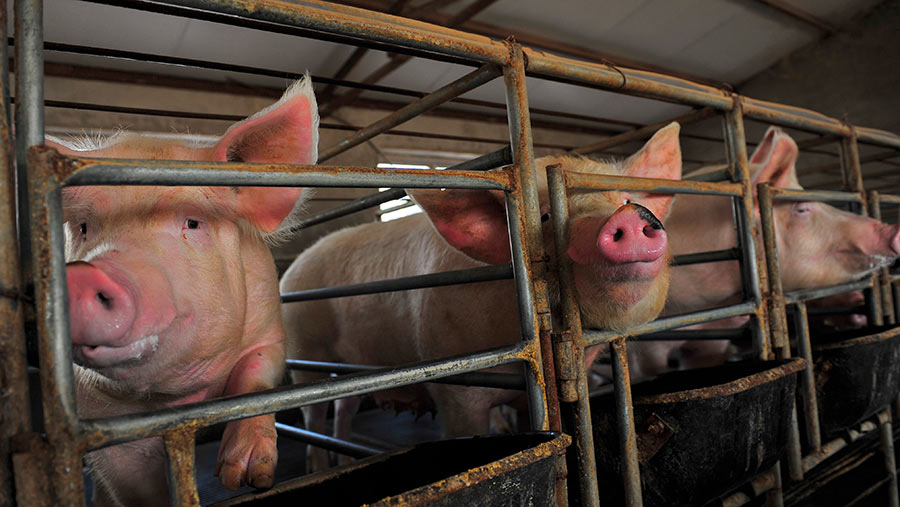China ramps up pig production with growth of large farms
 © Qiujusong/Adobe Stock
© Qiujusong/Adobe Stock For more than 30 years, China has been the largest meat producer in the world and its output continues to grow, with total meat production in 2022 totalling 92.3m tonnes.
Of this, pig meat made up 55.4m tonnes – with Chinese citizens consuming about 40kg of pork each annually, on average.
This highlights the scale of demand for pork in the country, explains Michelle Hu, deputy secretary general of the China Meat Association.
See also: What pig farming looks like in Canada
As well as being a producer of pork, China is a major importer, with 2.8m tonnes of pork and pig by-products coming in to the country last year. Most of these imports were of European and American origin.
Last year, 75,000t of pork and 53,000t of pig by-products were imported by China from the UK.
These accounted for 4.2% and 5% of total imports, respectively, and were cheaper than the average price of imported pork, according to Ms Hu.
Challenges
Abattoir capacity is a key challenge: China has an appointed abattoir scheme for the slaughter of pigs, but over recent years, the number of designated slaughterhouses has declined, putting pressure on capacity.
Animal epidemics including African swine fever have brought uncertainties to pig farming in the country. The Covid pandemic also had a massive impact on domestic production, from rearing to slaughter, says Ms Hu.
Future opportunities
China’s long-standing history of pig breeding, production and consumption means there is a bright future for the country’s pork sector, says Ms Hu.
It has the capacity to supply domestic consumption demands, offering another opportunity for producers in the country.
China also has a comprehensive six-part meat industry training programme to help encourage people into the sector.
Pig herd management in China
China is home to more than 40 million breeding sows and a national herd of more than 450 million pigs, says Michelle Hu, deputy secretary general of the China Meat Association.
About 700 million pigs are slaughtered in the country annually, which amounts to about 95% self-sufficiency. However, despite the huge number of animals, individual farm size is generally small.
In 2022, there were an estimated 20m pig farms – also known as “households” – across China, with an average herd size of 35 and an annual slaughter figure of 100 pigs for each farm.
However, this is changing, says Ms Hu, with “concentrated” pig farming (annual slaughter figures of more than 500 head) rising among medium-sized and large farms.
Between 2011 and 2021, the rate of concentrated pig farming increased by 25%, to account for 62% of farms.
This expansion has been encouraged by the Chinese government, she adds. In 2022, there were more than 30 pig farms in China with a sale volume of more than 1 million head.
These 30 farmers, and their subsequent production, accounted for more than a quarter of total pigs slaughtered in the country that year.
Quality assurance schemes are in the process of being drafted and Ms Hu says the board in charge of this is particularly interested in setting up schemes similar to Red Tractor in the UK.
Michelle Hu was speaking at a recent webinar hosted by AHDB.
